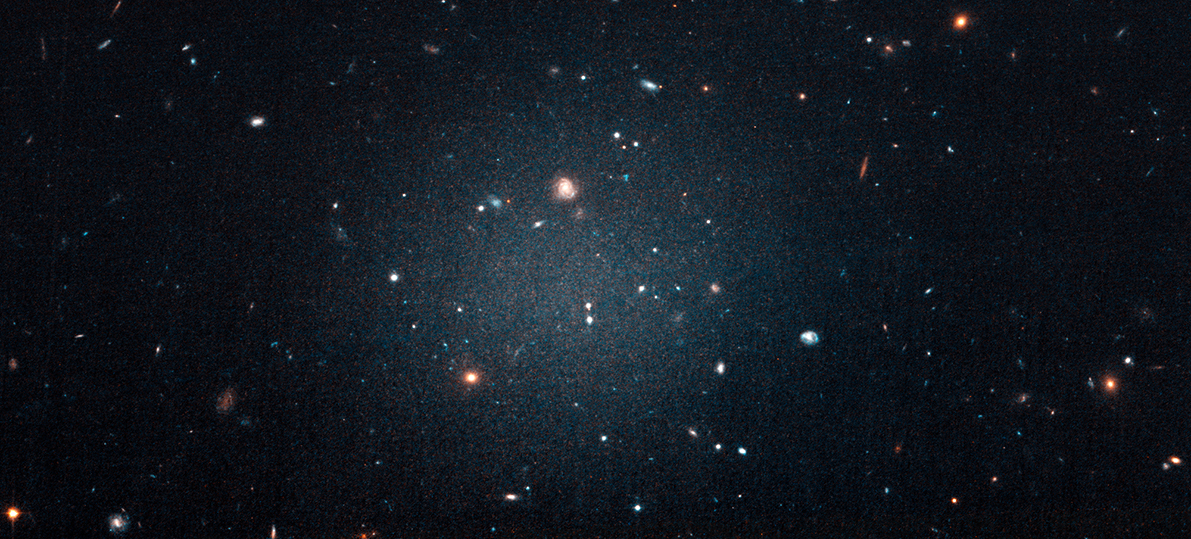The discovery of an ancient ‘ghost’ galaxy has added another tiny piece to the puzzle of how the cosmos came to be.
Astronomers have been examining the galaxy NGC* 1052-DF2 (discovered several years ago) and were rattled to find it contains virtually no dark matter.
What the hell is dark matter?
Scientists have long considered dark matter an essential ingredient to the makeup of the universe. This (roughly) 10-billion-year old galaxy has completely shifted this theory, challenging the fundamental ideas of how galaxies work.
Scientists estimate that the vast majority of the Milky Way’s mass (about a trillion times the mass of the sun) takes the form of dark matter. We know that this mysterious substance is not like ordinary matter (planets, stars, life) and cannot be seen due to the fact it does not absorb or admit light. The most common theory is that dark matter is entirely composed of particles that are yet to be discovered.
“Dark matter is our frenemy. We have no clue what it is. It’s kind of annoying. But we desperately need it in our calculations to arrive at an accurate description of the universe.” – Neil Degrasse Tyson – Astrophysics for people in a hurry
Astronomer Fritz Zwicky first proposed the existence dark matter in 1933 using Newtown’s laws of gravity. Scientists have since then studied the presence of this invisible anomaly by observing its gravitational pull it on the matter we can see.
What do we know about this oddball galaxy?
Professor Pieter van Dokkum from Yale University, who led a research team to this discovery, told the press: “This galaxy is a complete mystery, as everything about it is strange. How you go about forming one of these things is completely unknown.”
DF2 is roughly the size of our Milky Way galaxy, however, it contains far fewer stars, as well as no dark matter. Situated about 65 million light years away from Earth, further observations have revealed just how unusual it is. Unlike most spiral galaxies, DF2 has no dense central region, no spiral arms and is not flattened into a disc like other spiral galaxies. It also has no central black hole.
Researchers are now trying to unravel the mystery behind the galaxy, beginning with its age. It has been confirmed that DF2 is at least 10 billion years old, but if it is discovered to be 13 billion – the time right after the big bang – that will raise an entirely fresh set of questions.
Photo of NGC1052-DF2from NASA, ESA, P. van Dokkum (Yale University)
* NGC stands for the New General Catalogue of Nebulae and Clusters of Stars, the internationally recognised listing of such objects.


